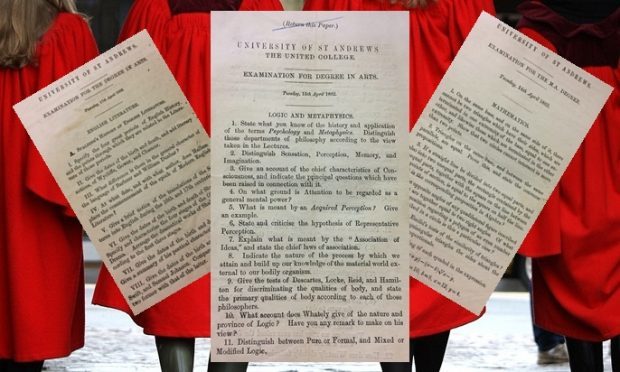The last thing current students want to see is another exam paper.
But for those of us who have long since passed through Higher education and can look back on exam season without breaking out in a cold sweat, St Andrews University has set us a little test.
For some end of year fun, the university’s library has posted three papers dating from the 1800s and covering a range of disciplines.
The English, Maths and Logic & Metaphysics papers pose questions including:
◊ Give the dates of the birth and death of Addison, Swift, and Samuel Johnson. Compare the prose style of the two former with that of the latter.
◊ The opposite angles of any quadilateral (sic) figure inscribed in a circle are together equal to two right angles. Of what general proposition regarding a polygon of an even number of sides inscribed in a circle is this a particular case?
◊ Indicate the nature of the process by which we attain and build up our knowledge of the material world external to our bodily organism?
In an accompanying blog, the library staff explain how testing if students has changed over the years. This includes a frankly terrifying account of how for final examinations candidates were made to sit on a black stone and be questioned by four examiners.
If all this has whetted your appetite, you can read the full list of questions below.
Good luck!





